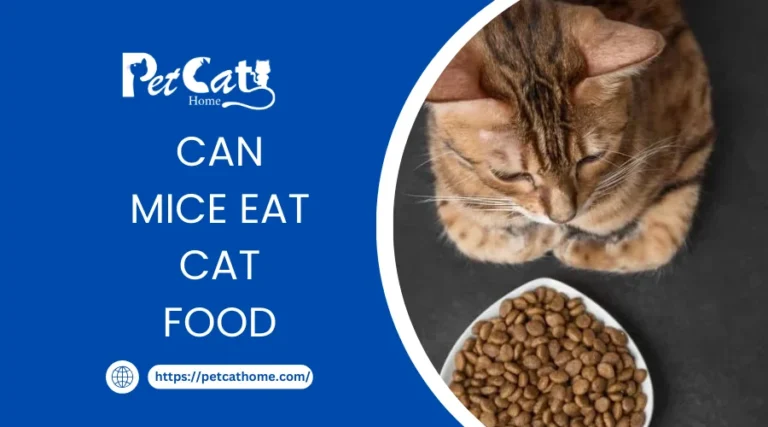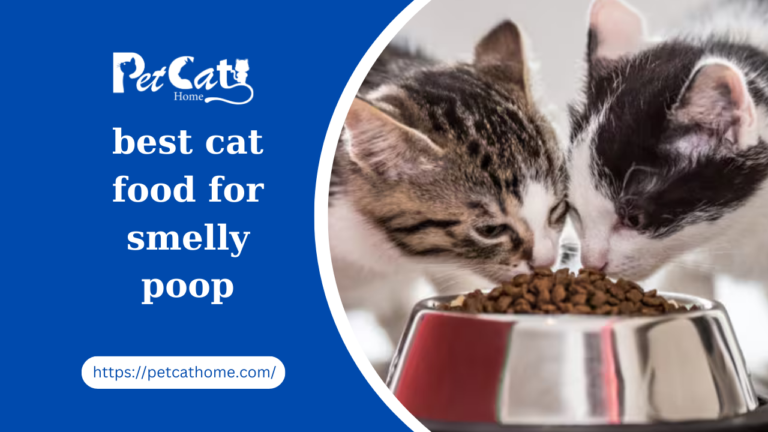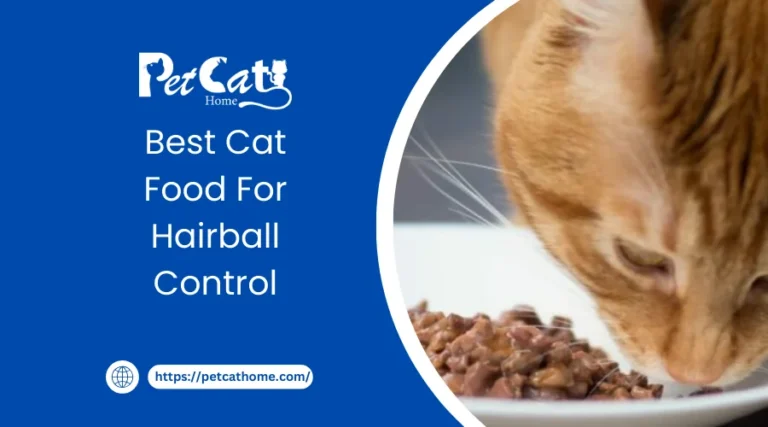The Ultimate Guide to Finding the Best Cat Food for Outdoor Cats
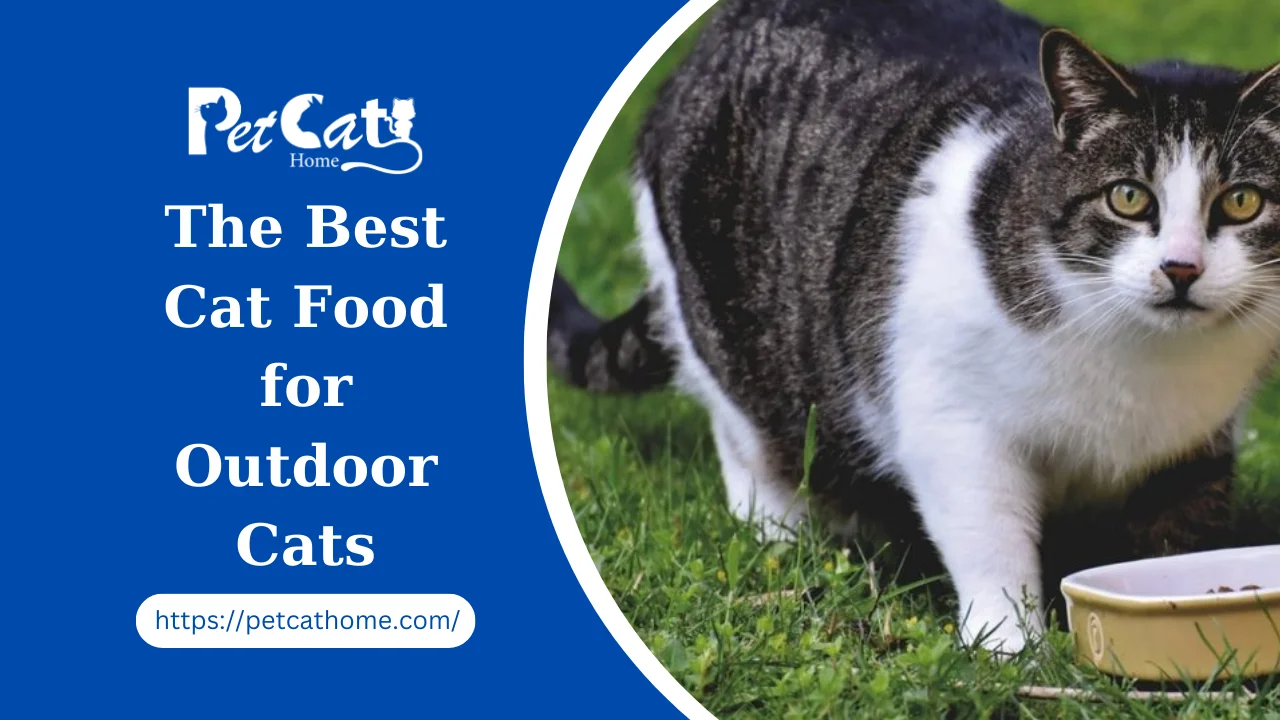
When it comes to cat care, making sure your outdoor cat is getting the greatest diet possible is essential to their well-being. Making sense of the many cat food options available can be difficult due to their number. With the help of this in-depth guide, you’ll be able to choose the best cat food for outdoor cats and make sure your pet enjoys all of their outdoor experiences to the fullest.
Understanding the Unique Needs of Outdoor Cats
Compared to their indoor counterparts, outdoor cats have more active lifestyles. Their daily adventures necessitate a diet that strengthens their immune system, promotes healthy digestion, and gives them plenty of energy. For this reason, it is essential to select outdoor cat food that is suitable for them to ensure their general health.
The Importance of High-Quality Protein
High-quality protein-rich diets are necessary for outdoor cats to maintain their active lifestyles. Seek for cat food that features actual meat, such as fish, poultry, or turkey, as the main ingredient. These protein sources supply the essential amino acids required for energy synthesis and muscle upkeep.
Essential Nutrients for Outdoor Cats
Outdoor cats require a diet rich in important elements, such as vitamins, minerals, and omega-3 fatty acids, but also well-balanced. These minerals maintain the health of the immune system, the condition of the coat, and joint mobility, among other body functions. It is ensured that cats get enough nourishment to flourish in their habitat by selecting cat chow made especially for outdoor cats.
Hydration and Outdoor Cats
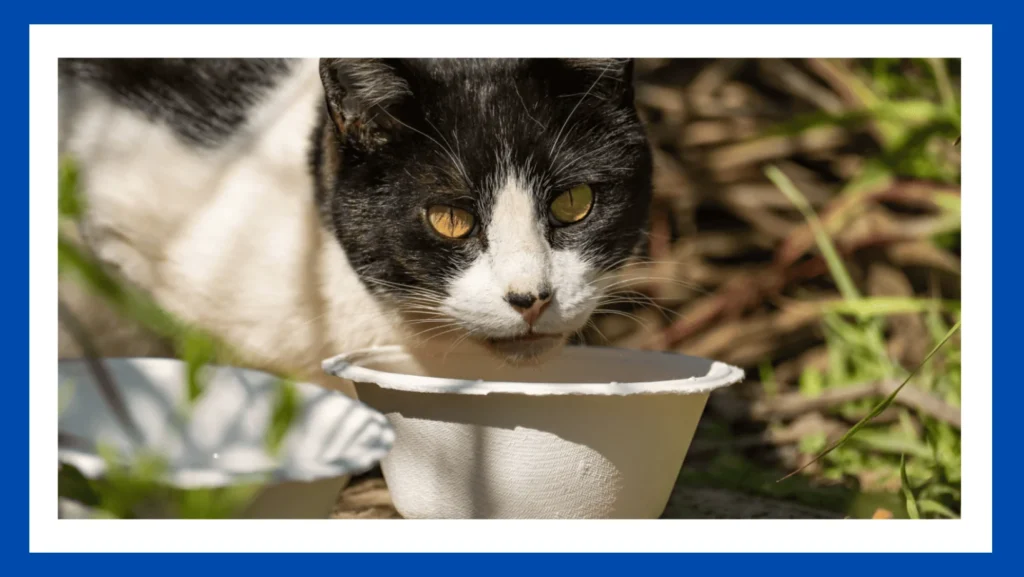
If outdoor cats have access to ponds or streams, they cannot drink enough water to keep properly hydrated. Wet cat food can help your cat drink more water, which will keep their urinary tract healthy and help them stay hydrated. Having fresh, clean water sources available outside also promotes appropriate hydration.
Managing Weight and Activity Levels
Maintaining a healthy weight is crucial for outdoor cats to prevent obesity-related health issues. Look for cat food formulated to support a healthy weight and adjust portion sizes according to your cat’s activity level. Regular exercise and interactive play sessions also play a vital role in keeping outdoor cats fit and healthy.
Addressing Dietary Preferences and Allergies
Consider your outdoor cat’s dietary preferences and any known food allergies when selecting their food. Some cats may have sensitivities to certain ingredients, such as grains or poultry. Opt for cat food with limited ingredients or novel protein sources to accommodate dietary restrictions and preferences.
Choosing the Best Cat Food for Outdoor Cats
Now that we understand the unique nutritional needs of outdoor cats, let’s explore how to choose the best cat food tailored to their lifestyle.
Reading Labels: Understanding Ingredients
When selecting cat food for your outdoor companion, pay close attention to the ingredients list. Look for recognizable, high-quality ingredients like real meat, fruits, and vegetables. Avoid foods containing fillers, artificial preservatives, and by-products, as these may not provide the nutrition your cat needs.
Selecting Between Dry and Wet Food
Both dry and wet cat food options have their advantages, and the best choice depends on your outdoor cat’s preferences and lifestyle. Dry food is convenient and can be left out for free feeding, while wet food provides additional hydration and may be more palatable for picky eaters. Consider offering a combination of both for optimal nutrition and variety.
Considering Special Dietary Needs
Some outdoor cats may have special dietary needs or health conditions that require specific formulations. Consult with your veterinarian to determine if your cat would benefit from a specialized diet, such as grain-free, hypoallergenic, or weight management formulas. These tailored diets can address specific health concerns and support your cat’s overall well-being.
Exploring Brand Reputation and Reviews
Researching cat food brands and reading customer reviews can provide valuable insights into product quality and efficacy. Look for reputable brands with a history of producing high-quality, nutritious cat food. Customer reviews can offer real-life experiences and help you make an informed decision based on other cat owners’ feedback.
Transitioning to a New Diet
When introducing a new cat food to your outdoor cat, it’s essential to transition gradually to avoid digestive upset. Mix small amounts of the new food with their current diet for 7-10 days, gradually increasing the proportion of the new food while decreasing the old. Monitor your cat’s response during the transition period and adjust accordingly.
Best Cat Food for Outdoor Cats 2024
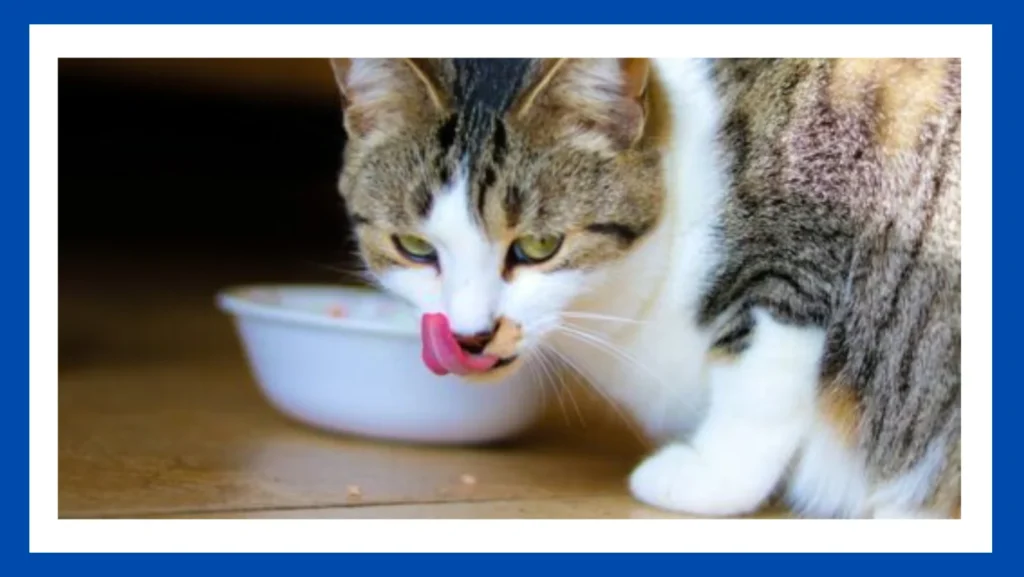
Outdoor cats need to be in great shape to perform all the outdoor activities adult cats love doing like climbing, jumping, running, hunting, and exploring. They must be strong enough to deflect health hazards and defend themselves from dogs, wild animals, and other cats. So to keep your cat healthy enough to withstand the outdoor challenges and fully enjoy the daily adventures, you need to feed her with the right cat’s diet. This is what we are going to talk about in this article, Best Cat Food for Outdoor Cats.
What To Look For:
All cats ought to eat the greatest food that their owners can purchase. For outdoor cats, there isn’t a specific diet to follow. They require the same wholesome food that indoor cats do, and every pet parent has to provide it.
However, outdoor cats require additional protection and health boosts because they are more active than indoor cats and are exposed to a wider variety of external factors.
According to some cat enthusiasts, outdoor cats should only be fed raw meat or other natural cat food. This isn’t always accurate. If properly prepared, raw food is acceptable.
A raw feed can be beneficial even for indoor cats. Serving raw food, however, requires careful preparation and carries some hazards, such as the possibility of spoiling or parasites.
As long as the commercial cat food is of a good calibre and contains clean animal protein and necessary nutrients, it should be OK.
Both dry and wet food are beneficial for cats living outside. While wet cat food might aid in digestion and hydration, dry cat food is better for oral health.
When looking for the best cat food, keep the following characteristics in mind:
High Protein Diet (And Low-Carb)
The ideal food for outdoor cats is high-protein cat food for more energy and strength. The best dry cat food must have a minimum crude protein content of at least 30% (even for kitten food), and at least 10% for canned or wet food. Choose a clean animal protein as the first ingredient in the cat food, which you can see on the label.
A clean animal protein is derived from named animal meat like real chicken meat. Some cheap cat foods don’t specify the animal source. Instead, they write animal derivatives, meat by-products, or meat meals on the label, which are poor-quality ingredients in cat food. Because cats are obligate carnivores, they need animal proteins to survive and maintain lean muscle mass.
Obligate carnivores need meat-based food because they have amino acids and nutritional requirements that can only be derived from animal proteins.
Cats, in contrast to dogs, don’t need carbohydrates, though their brains do benefit from plant-based glucose.
Steer clear of dry cat food that has inexpensive beans or grains as the main ingredient. Cheap fillers such as corn and wheat are often used in pet food.
Because they contain fibre and carbohydrates, grains are not inherently negative substances. However, the first two ingredients in cat food must, at the very least, be meat-based.
Poultry meat—such as chicken, turkey, or duck—may be the finest source of animal protein for cat food because it is thought of as natural cat food, unlike beef from cattle, which is not a natural prey for small wild cats.
However, some cats are allergic to particular proteins, such as fish, steak, and chicken. Check your cat for any symptoms.
High In Calories
With all the physical activity they do in outside, your adult outdoor cats might benefit greatly from the additional calories in the cat diet.
Your cats typically expend more energy in the winter months since their bodies have to work harder to stay warm due to the lower temperatures.
The minimum caloric value for dry cat food is 3,500 kcal, while the minimum caloric content for wet cat food is 40 kcal per serving. Additionally, choose dry cat chow that has at least 13% crude fat.
But before you add all those calories, make sure Tabby is at a healthy weight.
High In Moisture
Some outdoor cats miss meals and lose bodily fluids due to their excessive preoccupation.
Therefore, feeding them wet cat food or a mix of dry and wet food is beneficial. The moisture content of dry cat food can also be somewhat helpful.
Wet cat food should have a minimum moisture content of 80%, whereas dry cat food should have a minimum moisture content of 10%.
Complete and Balanced Nutrition
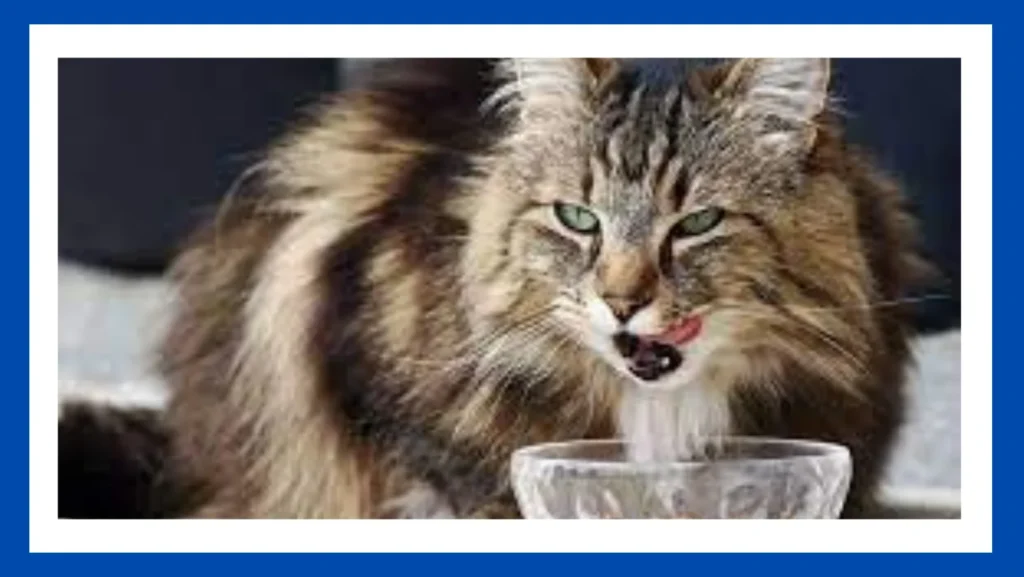
Essential vitamins and minerals can also help cats thrive when added to their food. These benefits include healthy skin and coat, a strong immune system, a healthy digestive system, and a healthy heart.
Probiotics
Probiotics, which are beneficial bacteria that shield a cat’s digestive system from harmful bacteria, are another addition to premium cat foods.
Cats that live outside frequently eat a variety of unhealthy foods. Probiotics might lessen the negative consequences of such harmful substances.
Best Cat Food for Outdoor Cats
Giving your outdoor cats the greatest nourishment possible is essential to their health and well-being. Outdoor cats are obligate carnivores, just like their feline ancestors, and they need a diet rich in animal protein to fuel their active lifestyle.
However, it might be difficult to choose the finest cat food for outdoor cats because there are so many different kinds available. The best cat food products will be covered in this article, with an emphasis on the vital nutrients, protein levels, and general health advantages for your outdoor friends.
Food for Outdoor Cats
Cats that live outside require a particular food to suit their specific dietary requirements. To support their outdoor activities, they need a diet that is balanced, strong in protein, and rich in critical elements.
In addition to meeting these needs, the finest cat food for outdoor cats is made to strengthen their immune systems, which enhances general health and length of life. Always search for a high-quality protein source, like cage-free chicken or fish, as the first ingredient when choosing the finest diet for your outdoor cats.
Importance of High-Quality Ingredients
It is impossible to exaggerate the significance of using premium ingredients in your cat’s diet. Cheaper cat food frequently has artificial flavours, colours, and meat byproducts that have no nutritional value and may even be harmful to your cat’s health. Conversely, premium cat food companies emphasize natural ingredients with a range of health advantages, such as sweet potatoes, fish oil, and real chicken.
Rich in vital amino acids, animal-based proteins promote the growth of lean muscle mass and satiate your cat’s natural appetite. Fish oil fatty acids support healthy skin and coats, while sweet potatoes supply vital vitamins and antioxidants that support the immune system. To be aware of what you’re feeding your cat, always make sure to read the ingredient list on the label.
Types of Cat Food
Your outdoor cat’s health must select the proper food. Wet food and dry food are the two main categories of cat food to take into account.
Wet Food: Rich in moisture, wet cat food keeps cats hydrated. This is especially advantageous for cats who don’t get enough water in their diet. Also, the high moisture content is beneficial for cats with certain medical issues, such as kidney disease. Wet food is a great option for keeping a healthy weight because it frequently contains more protein and less carbs.
Dry Food: For many cat owners, dry food is an affordable and practical choice. It has a longer shelf life and is frequently loaded with nutrients that are high in energy. It is imperative to select a product that has actual chicken or fish as its principal ingredient as some dry foods have greater carbohydrate contents. Essential nutrients are also included in the best dry cat food brands to promote your cat’s general health.
Wet Food
There are various benefits to choosing the best-wet cat food for outdoor cats. Because of its high moisture content, it promotes urinary health and helps with hydration, which is particularly advantageous for cats who don’t typically drink a lot of water. It also usually contains a lot of animal protein, which is quite similar to what a cat would naturally eat in the wild. Because of this, wet food is a great option for stray and feral cats who are making the move to domestication. Serving your cat only as much as they can consume in one sitting is a good idea though, as wet food spoils easily once it’s opened.
Dry Food
Dry cat food frequently excels in terms of economy and convenience. Because it doesn’t spoil easily, it’s a great choice for free feeding. The top dry cat food for cats that live outside will have a premium protein source as the primary element. Along with other vital nutrients to promote a strong immune system, many dry foods also provide fatty acids for a healthy coat and skin. Remember that although dry food has more nutrients than wet food, it has less moisture, so make sure your outdoor cats always have access to fresh water.
Crucial Nutrients for Outdoor Cats
Compared to indoor cats, outdoor cats have different nutritional needs because they are more active. They need a high-protein diet to maintain their energy levels, but they also need several other vital nutrients for optimum health.
Animal Proteins: Due to their obligatory carnivorous nature, cats require a diet rich in animal proteins. Seek out cat chow that has actual chicken, fish, or organ meat as the primary ingredient. These components help your cat’s muscles grow and become stronger.
Fatty Acids: To maintain healthy skin and a glossy coat, fatty acids like Omega-3 and Omega-6, which are frequently found in fish oil, are essential. They also have anti-inflammatory qualities and boost your cat’s immune system.
Minerals and Vitamins: Calcium and phosphorus, as well as vitamins A, D, E, and K, are essential for your cat’s general health. They assist with several processes, including immune response and bone health.
Taurine: Your cat’s heart, eyesight, and reproductive system are all supported by this vital amino acid. Since cats are unable to synthesize taurine, their diets must have it.
The best Cat Food for Outdoor Cats
FAQs
What qualities should I search for in outdoor cat food?
Choose high-protein cat food to help them maintain their active lifestyle. Seek recipes using meat as the main component and stay away from soy or corn fillers.
Should indoor and outdoor cats eat different things?
Indeed, compared to indoor cats, outdoor cats may require a different diet and tend to be more active. Cat food for outdoor use frequently has more protein and fat content to meet their energy needs.
Do outdoor cats require a diet devoid of grains?
A grain-free diet isn’t necessary for cats living outside, but it might be beneficial for some of them. Pay closer attention to the ingredients’ quality and make sure the food is nutrient-dense enough for their lifestyle.
Are there certain components in outdoor cat food that I should stay away from?
Steer clear of artificial flavours, colours, and preservatives. Additionally, avoid foods high in carbohydrates and foods high in low-quality protein sources.
For cats that live outside, should I get dry or wet food?
Cats that live outdoors can eat both wet and dry food. For outdoor feeding stations, dry food could be more practical, but wet food can help them stay hydrated. Some owners decide to use both in conjunction.
Conclusion
Taking into account the specific nutritional requirements, activity level, and environmental aspects of outdoor cats is important when choosing the best cat food for them. Give premium ingredients—such as proteins derived from animals—priority and stay away from artificial additions and fillers.
Make sure your outdoor cat always has access to clean water, especially in the event of severe weather. Keep an eye on their food intake to avoid overindulging, and seek veterinary advice for tailored dietary suggestions, particularly if your cat has certain medical issues or dietary intolerances. You can contribute to your outdoor cat’s general health and well-being by giving them a balanced diet that is specific to their needs.

